The Bay Trail Preview: Intel Atom Z3770 Tested
by Anand Lal Shimpi & Brian Klug on September 11, 2013 12:00 PM ESTIn addition to showing Bay Trail running on a Windows 8.x platform, Intel showed us a “pre-beta” version of the platform running Android 4.2.2. I have to emphasize that the build they showed us definitely seemed pre-beta, as there was some instability, but overall the build was good enough to run some tests on and get a feel for. Intel made it clear that they do have a lot more work to do on their Android build before it’s considered close to final quality than the Windows equivalent.
Inside Android we can still see the CPU state table data and how long the cores are sitting in each performance state still, despite this now being managed in-silicon on Bay Trail. In addition Android sees the 2.39 GHz Z3770 boost frequency and reports it. I didn’t see any strange behavior on the device while running tests and watching CPU frequency, if anything the reference design platform stayed at the maximum boost frequency even with four cores plugged in for an impressive amount of time. Of course this is a tablet so there’s more TDP to play around with compared to a phone.
Depending on where you were in the Android UI, there was some definite stutter, but I’m told this is a result of an issue with Dalvik not allocating threads to cores properly that Intel is still tuning, something which you can see plays itself out as well in the AndEBench Java test that runs in Dalvik. The launcher especially had some stutter, but Intel claimed they were aware of it and that final performance in areas like that would be dramatically improved. Regardless of the state of Bay Trail’s Android port, it affords us the opportunity to look at performance through our pretty standard benchmark suite.
On the CPU side for Android we’re still limited to just a few tests that rely on a combination of native code and stuff that runs inside the browser. That means AndEBench, JavaScript benchmarks, and part of Vellamo.
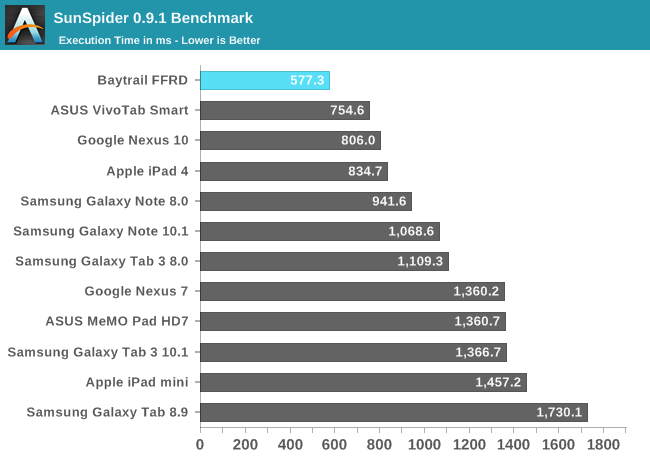
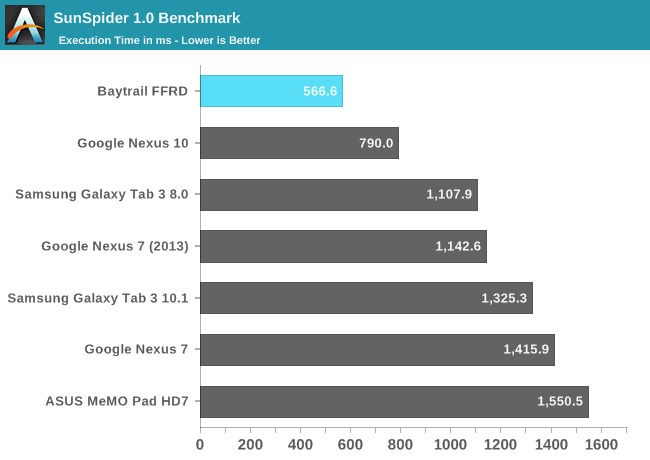
Sunspider has been a regular staple but in recent time has become an exercise in browser JavaScript engine optimization rather than actual performance. Nevertheless the FFRD takes the crown in both 1.0 and 0.9.1 (we have more tablet data from the 0.9.1 version so I replicated it here).
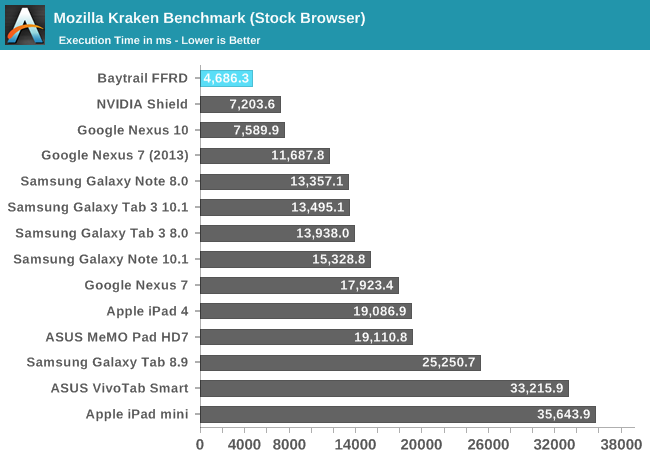
Kraken is another JavaScript benchmark which hasn’t quite been an optimization target everyone has gone after lately, and it’s also longer, which makes it a bit more reliable. Once again Bay Trail takes the crown here with notably faster JS engine performance.
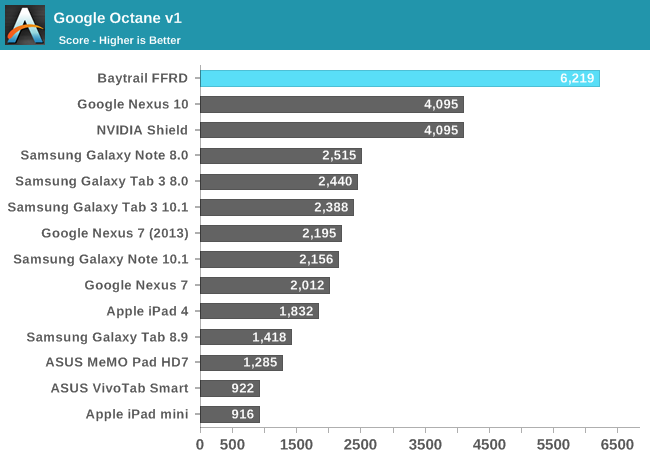
Google Octane is another JS test that isn’t quite as platform optimized yet, here there’s once again dominance by Bay Trail with just over a 50 percent higher score.
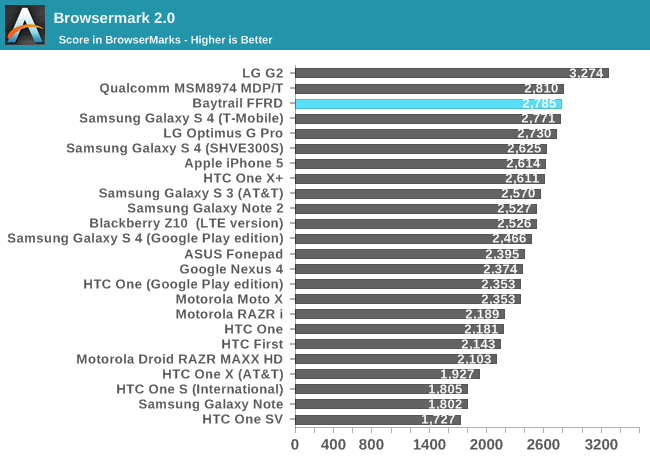
Browsermark has a combination of both JS tests and other web related performance metrics. Here the Bay Trail platform lags behind the 8974 based devices slightly. This isn’t a raw JavaScript benchmark again but rather a more holistic web browsing performance test, so it’s interesting to see Bay Trail a bit behind here.
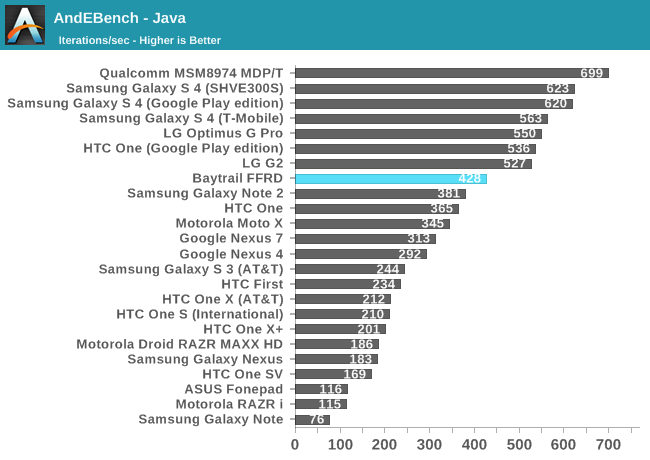

AndEBench is a combination native compiled microkernel benchmark (indicative of NDK application performance) that also runs a very similar workload atop Dalvik like a normal Android Java application. Here we can see what Intel was talking about when they said they have more work to do getting Dalvik working properly at dispatching threads to appropriate cores, hopefully the Java number will climb considerably. The native test also shows a lead over the competition.
GPU Performance
While Bay Trail clearly leads on the CPU side, its GPU performance is more middle of the road - at least among the higher end SoCs. In 3DMark Bay Trail's GPU performance is aided by the more CPU bound nature of the benchmark, but here Intel is able to beat the Snapdragon 600. Snapdragon 800 on the other hand pulls ahead by around 35%.
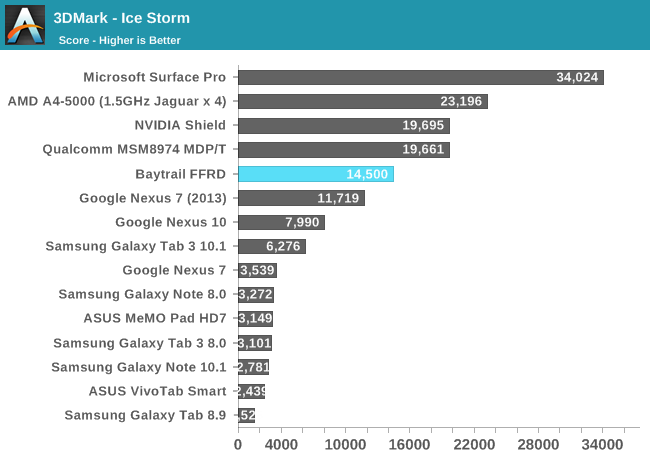
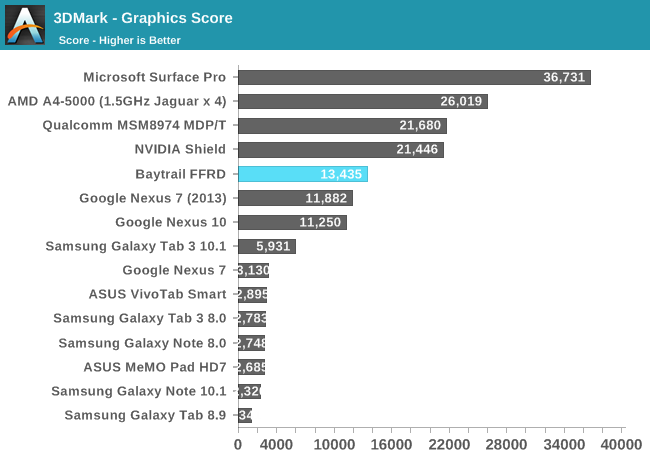
The 3DMark Physics test is effectively a CPU test, which once again plays to Bay Trail's strengths. Here it's faster than Snapdragon 800 and Cortex A15. Only Ivy Bridge is quicker in a tablet.
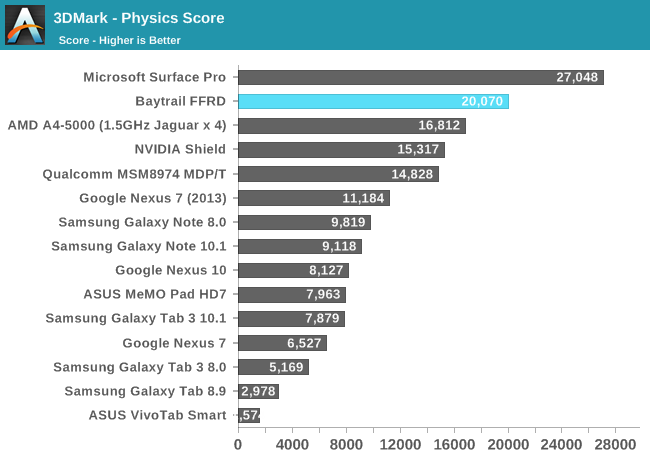
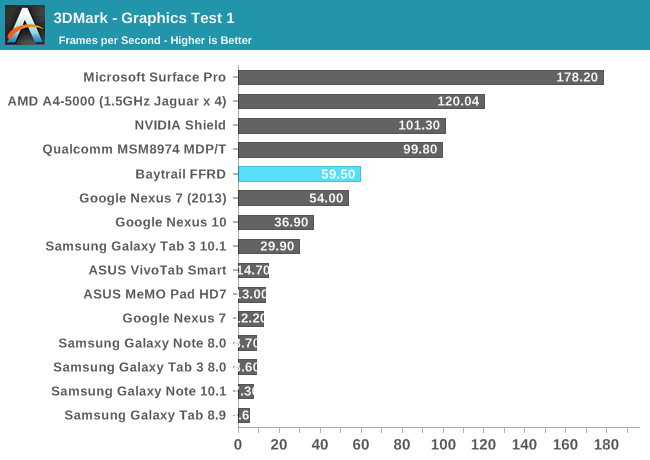
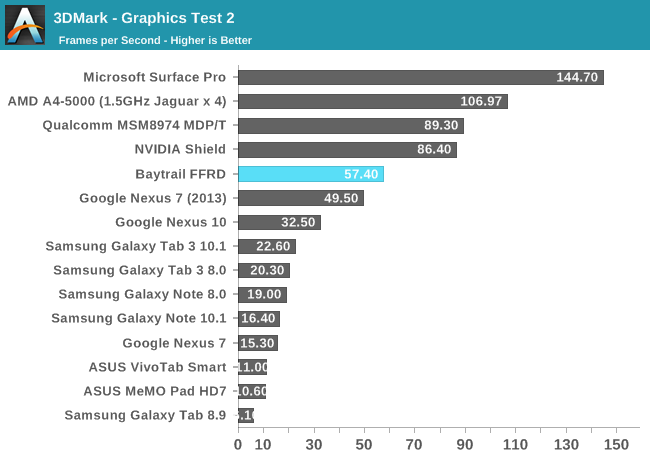
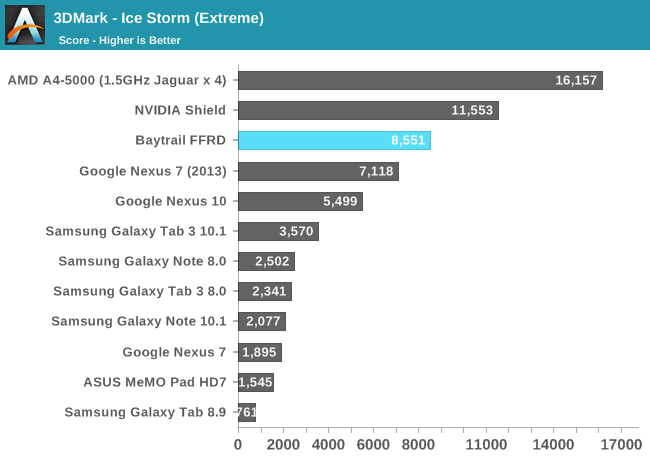
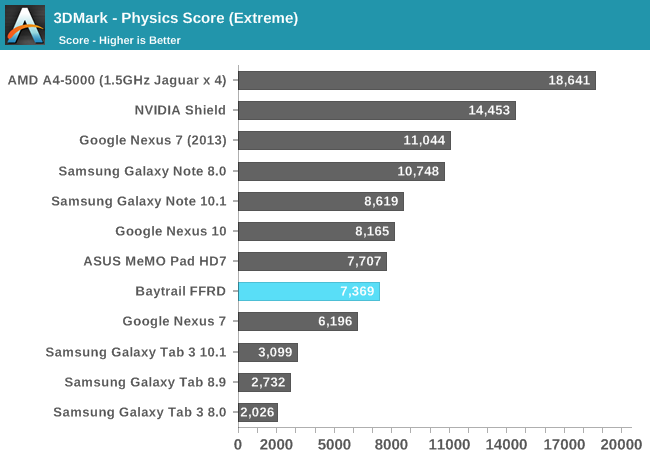
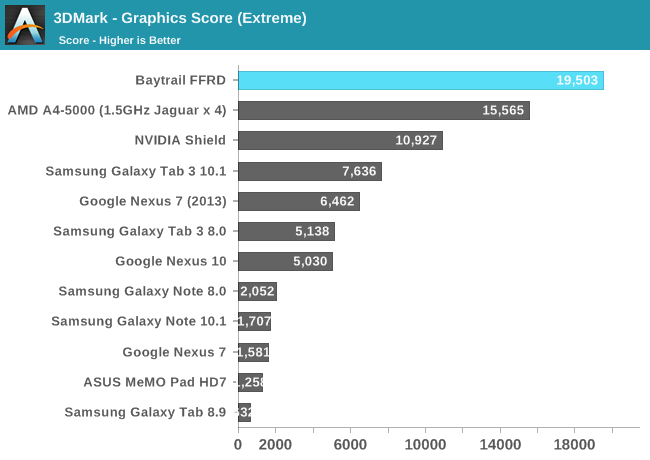
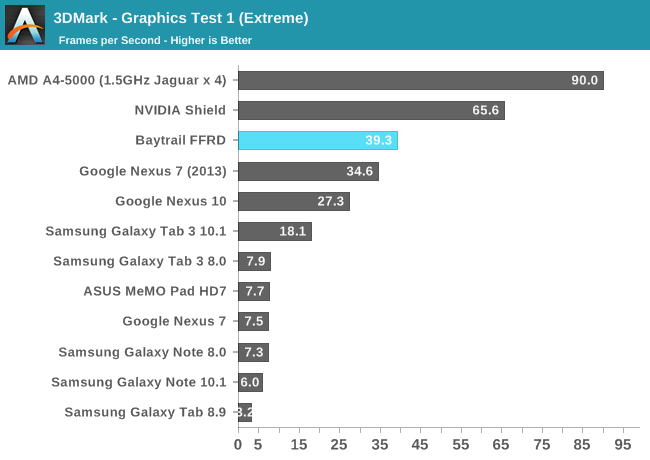
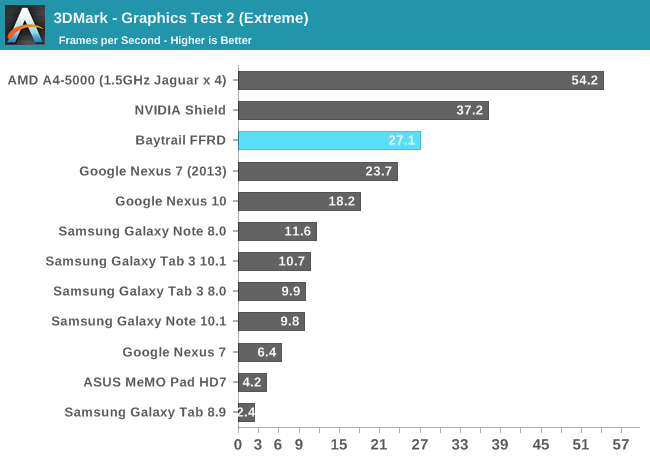
Basemark X
Basemark X is a bit more GPU bound than 3DMark, and we also have iOS data here so we can put Bay Trail's performance in better perspective. Here Bay Trail is a bit slower than the iPad 4, and clearly Tegra 4 and Snapdragon 800. Intel's GPU in Android is measurably quicker than Adreno 320/S600 though.
Bay Trail's onscreen performance is penalized by the FFRD's extremely high native resolution.

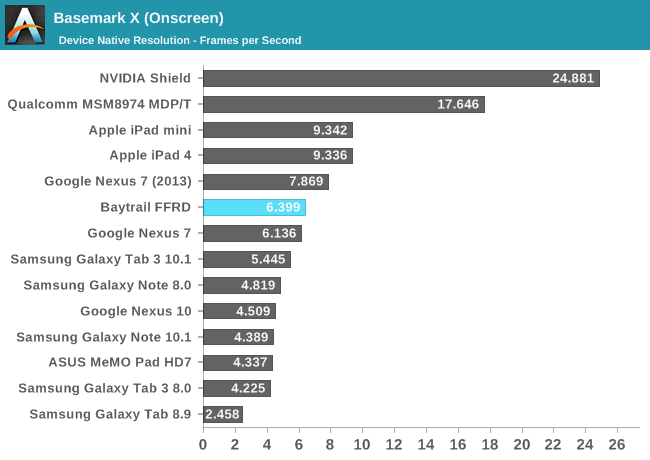
GLBenchmark 2.7
The more interested GLBenchmark numbers, T-Rex HD, show Bay Trail just behind the iPad 4 in performance. It's definitely not bad at all but clearly not industry leading.
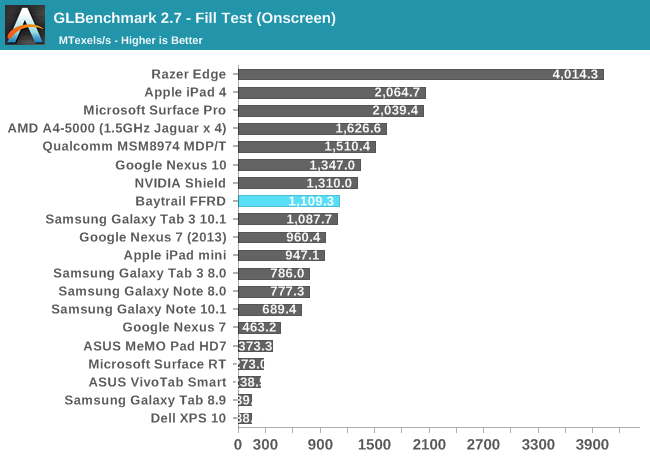
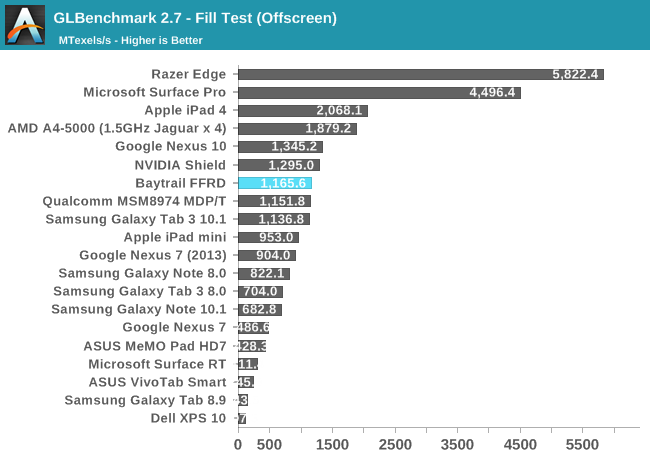
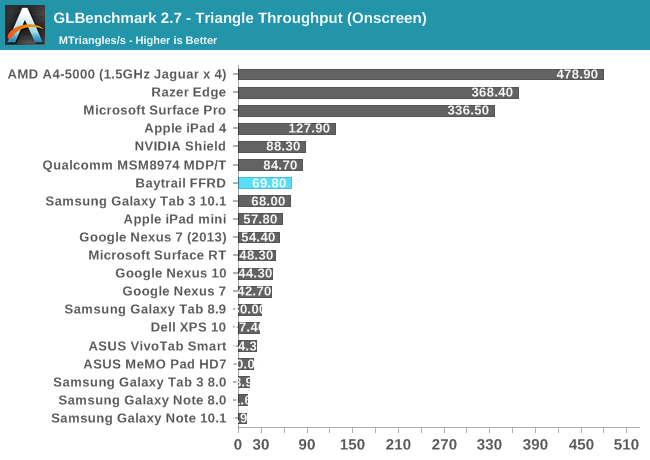
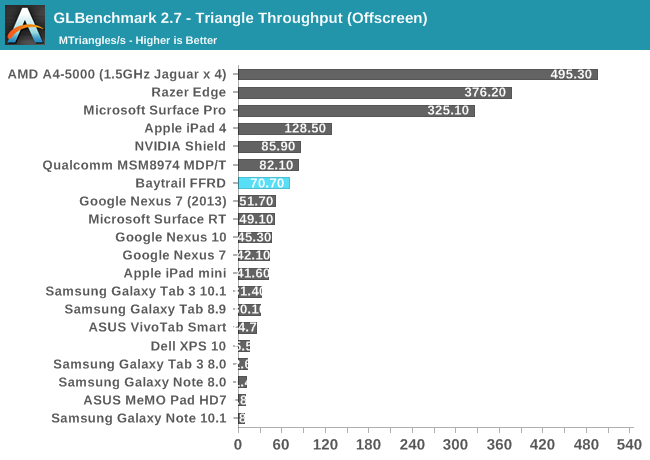
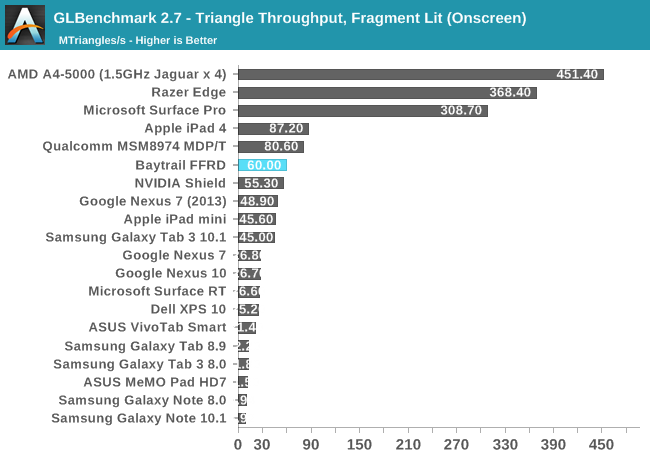
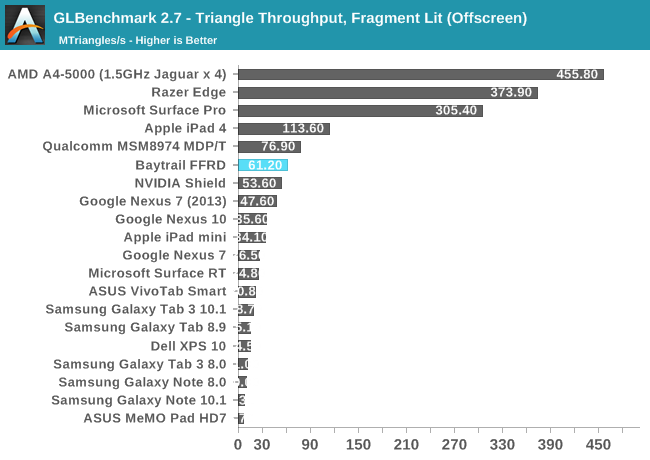
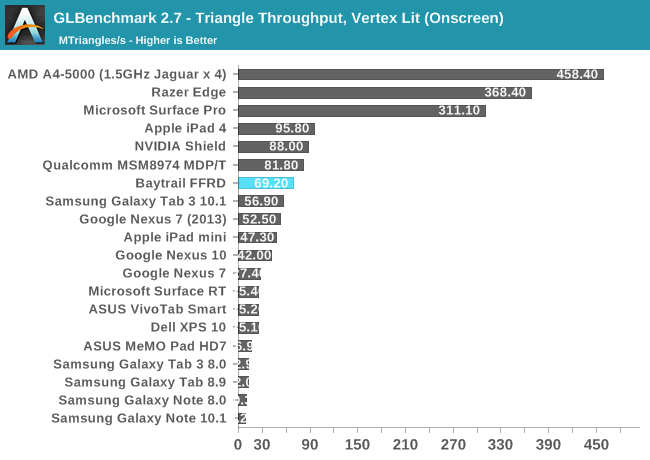
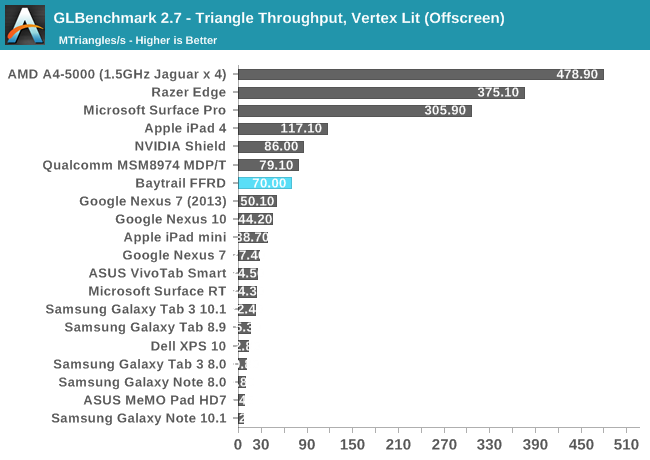
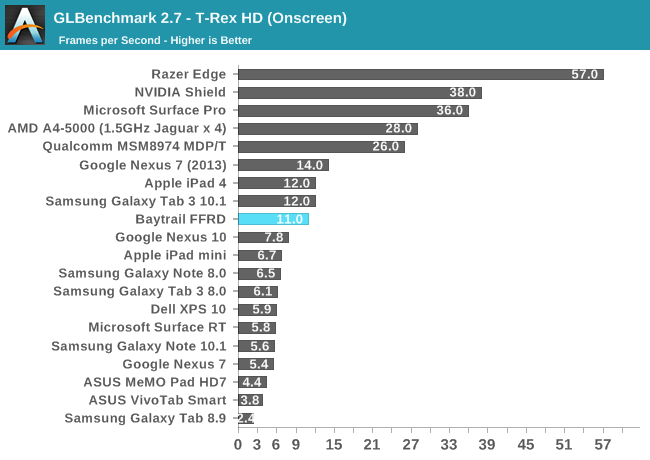
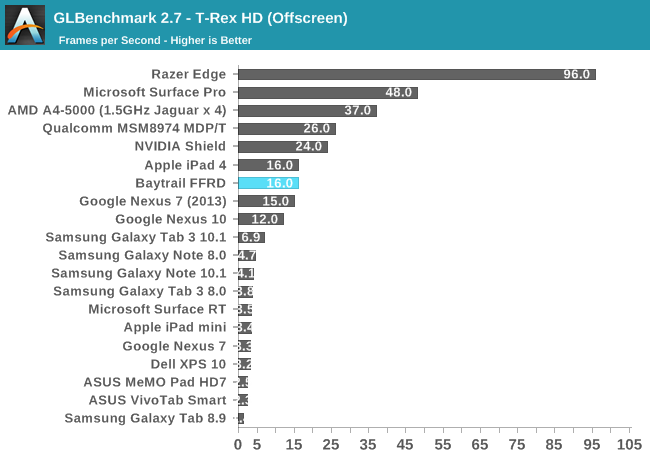
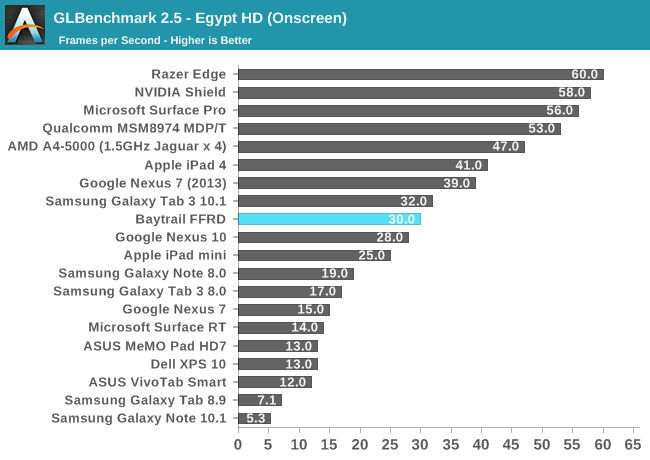
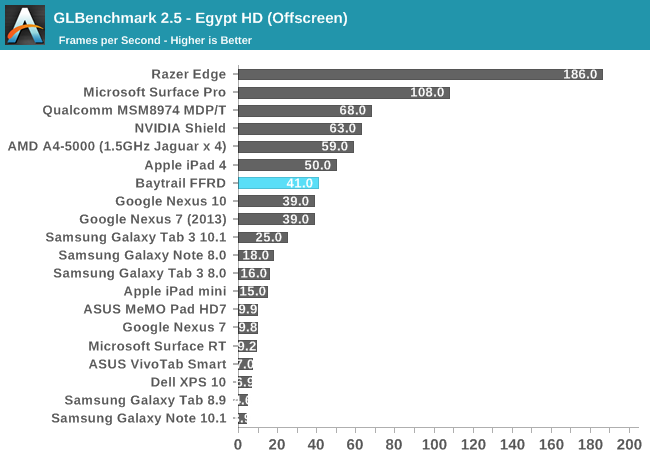
















190 Comments
View All Comments
silverblue - Wednesday, September 11, 2013 - link
I wouldn't be too sure about that. I read that GloFo had issues with 28nm at the time, and AMD had to go with TSMC, though I imagine Kaveri would be at GloFo.Nagorak - Wednesday, September 11, 2013 - link
I don't think the performance is all that surprising. Intel has been working with a major process advantage, and their CPU architecture is simply better at this point, as well.I saw some articles elsewhere on the 'net where the writer was saying they didn't think Bay Trail would use less power than Kabini, which was just stupid. If Bay Trail used as much power while on a much better process node, it would be ridiculous.
name99 - Wednesday, September 11, 2013 - link
"The question of who will win the ARM war has been answered."Uhh, no.
The multi-threaded benchmarks are completely uninteresting --- how many cores get slapped on a die is based on marketing consideration, not tech.
The interesting benchmarks are the single-threaded ones. If we believe what Apple says, the combination of the ARM-v8 ISA, higher frequency, and the usual "more transistors so smarter micro-architecture" gets Apple (and presumably the other high-end ARM designs) to rather better than this single-threaded performance, and, I would guess, at rather lower power.
romanov123 - Wednesday, September 11, 2013 - link
Can you back up this claim with any benchmark results for ARM-v8? FYI Silvermont is capable of supporting 64-bit OSes.artk2219 - Thursday, September 12, 2013 - link
The thing with Baytrail is that it has turbo core where as Kabini does not, meaning its probably spending most of its time around 2ghz or so which is 33% faster clock speed or about 25 to 28% faster on a perceptible level. It got me wondering when cinebench put them equal in IPC but everything else was saying it was faster, it makes me think cinebench super hammered the cores and everything else wasnt as punishing, thats the only way I can account for that performance boost in everything else. Im not saying that it wont be perceptibly faster, especially with lower power consumption, what I am saying is that its graphics are absolute garbage, I mean, it still loses out to Brazos... Either way for its power usage its pretty damned good, but again its a non mature 28nm process vs. a very mature 22nm one, Im definitely curious to see what kabini looks like after a refresh.xakor - Wednesday, September 11, 2013 - link
Who else is simply skipping over all synthetics benchmarks?Homeles - Wednesday, September 11, 2013 - link
Not the informed people.Krysto - Wednesday, September 11, 2013 - link
Don't forget the real speed of these is 1.33-1.5 Ghz, not whatever they're using for Turbo. But Turbo is what the benchmarks are using. You won't get that performance all the time on your device, though.virtual void - Wednesday, September 11, 2013 - link
True, but it is equally true for all current tablets/phones SoCs. See Anands review of Moto X where the CPU frequency is measured on Snapdragon 600.http://www.anandtech.com/show/7235/moto-x-review/7
Homeles - Wednesday, September 11, 2013 - link
As pointed out by virtual void, your argument (as usual) is completely invalid.